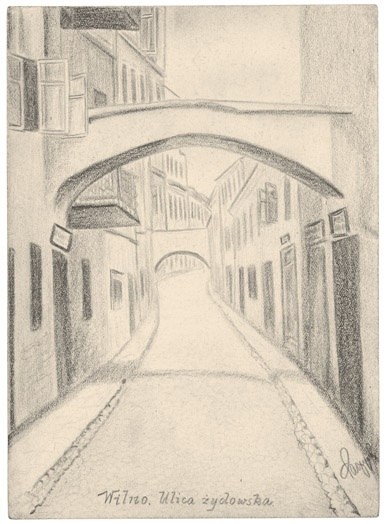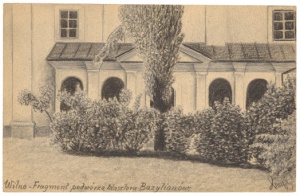

Vilnius. A Jewish street
| Author: |
M. Paczińsky (20th century) |
| Created: | 1920s–1930s |
| Material: | paper |
| Technique: | graphite and lithographic pencil |
| Dimensions: | 17.90 × 13 cm |
| Signature: | bottom right: signature, inscription: Wilno. Ulica żydowska |
This lithograph by M. Paczyński shows a street with two arches in the Jewish Ghetto, devoid of people as if it were the abbath. The drawing is naive, slightly primitive, and based on a photograph by the famous interwar photographer Jan Bułhak (Jan Bułhak, Vilnius, II, compiled by J. Gudaitė. Vilnius: Lietuvos nacionalinis muziejus, 2013, p. 56). The name of the street changed over time: under the Russian Empire it was called Butcher Street (in Russian Mясная, in Polish Jatkowa) because it bordered the meat market by the Town Hall. In the interwar period, under Polish rule, it was named after the Vilnius Jew Julian Klaczko, who was famous in Poland as a writer. After the bombardment during the Second World War, only the part of the street survived. Today it is named after Mark Antokolsky, the Vilnius-born Jewish sculptor, who became one of the most famous sculptors in Russia in the 19th century. There is only one small arch left on the street.
Source: Law firm Valiunas Ellex art album VILNIUS. TOPOPHILIA I (2014). Compiler and author Laima Laučkaitė







